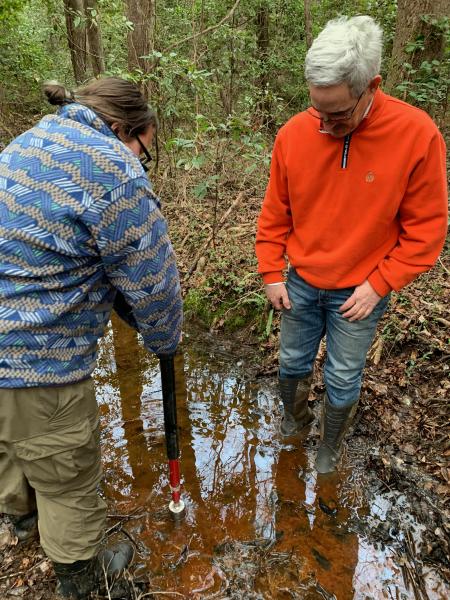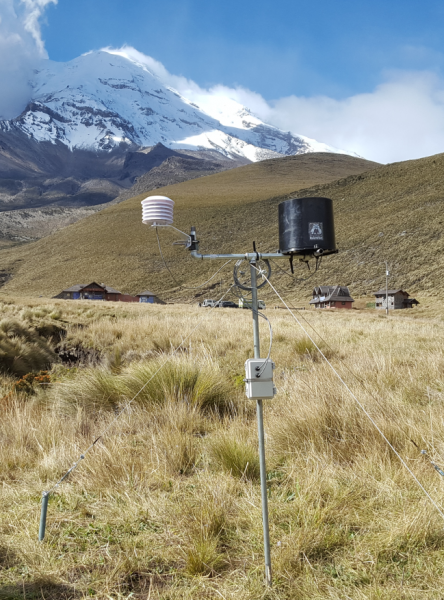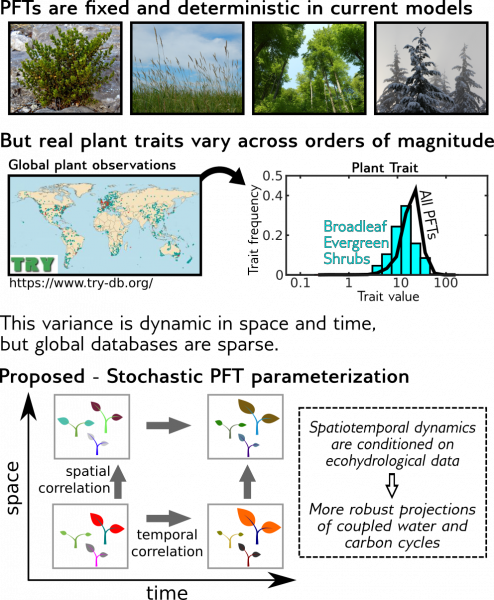Current Projects:
Tribally Directed Interdisciplinary Project on Wild Rice / Manoomin / Psiη
See project website here.
Sulfur Hydrobiogeochemistry

Because sulfate concentrations are typically low in freshwater systems compared to marine settings, sulfur has generally not been considered to play a significant role in freshwater biogeochemical cycling. However, recent studies show growing evidence for sulfur cycle reactions in wetland sediments that involve less commonly measured sulfur species (intermediate-valence sulfur froms) and occur at unusually fast reaction rates. These cycles are referred to as “cryptic” because they often result in only small net changes in concentration of any single sulfur species and can be easily missed using conventional observations. Sulfur cycling has a number of important societal implications. First, cryptic sulfur cycling is tightly coupled to the cycling of other elements of well-recognized importance, such as iron and carbon. Further, sulfide, the geochemically reduced form of sulfur, can impair the growth of certain aquatic plants, such as wild rice, and disrupt ecosystem services. In collaboration with the Santelli Geomicrobiology Lab, our group is extending previous laboratory and field studies on freshwater cryptic sulfur cycling through the following directions: (1) evaluating the role of hydrologic fluxes in regulating sulfur reactions, and (2) incorporating the physical, chemical, and microbial processes controlling cryptic sulfur cycling into reactive transport modeling in order to better understand and predict their impacts on freshwater environments. We have been investigating a mining-impacted riparian wetland in northern Minnesota, which has elevated concentrations of sulfate (Ng et al., 2017; Ng et al., in review). More recently, we have expanded our sulfur investigations to the DOE’s new Argonne Wetland Hydrobiogeochemistry Scientific Focus Area study site in South Carolina.
Funding: DOE
Eco-hydrogeology and Hydrochemistry of Vulnerable Tropical Glaciers

Climate models predict amplified warming at high elevations in low latitudes, motivating our research group to evaluate the vulnerability of tropical glacier-fed watersheds to global warming. To conduct this work, we are overcoming obstacles in remote and data-sparse watersheds by combining commonly measured hydrochemical tracers with new low-cost, open-source hydroclimatic sensors (developed by our collaborator Prof. Andy Wickert) and with new integrated watershed modeling capabilities. In a glacierized watershed on Volcán Chimborazo, Ecuador, results from our multi-method approach challenge the widely held assumption that glaciers dampen variability in stream discharge by instead showing that meltwater can drive nearly all the temporal variability in discharge in sub-humid climates (Saberi et al., 2019). Our model simulations also showed 15% of groundwater discharge to comprise of glacier meltwater, suggesting that after glaciers disappear, groundwater may provide less of an independent buffer to water supplies than otherwise expected. Our ongoing work addresses shortcomings in standard hydrochemical “mixing models” that assume that tracers are inert and can be used to track distinct “end-member” sources. In reality, most tracers actually react with soils or bedrock, and flow across both above- and below-ground pathways violate “end-member” assumptions. We are leveraging a new integrated hydrological model that uniquely incorporates reactive transport (RT-Flux-PIHM, Bao et al., 2017), to achieve more accurate hydrochemical constraints on glacier melt contributions to streamflow. Further, because of the inability to continuously measure solutes everywhere, the new model is providing unprecedented spatiotemporal information on hydrological and geochemical interactions, which in usual approaches must be inferred from point measurements at the watershed outlet (e.g., "C-Q" analysis). Ultimately, we will be predicting future hydrologic, hydrochemical, and ecological responses to rapid glacier retreat in tropical watersheds in Ecuador, which will have implications for water supply, biogeochemical cycling, and ecosystems in the downgradient regions.
Funding: NSF
Past Projects:
Stochastic Plant Traits in Ecohydrologic Models

Ecohydrological models enable investigations of how water and vegetation are inextricably linked, but major uncertainties about simulating vegetation persist. Models generally simplify the enormous diversity of plants into a tractable number of groups, each represented as a “plant-functional-type” (PFT) with a shared set of parameters. However, recently compiled global plant data reveal that certain plant traits can vary just as much within a single group as between groups. My group is upgrading the inadequate paradigm of fixed PFTs in ecohydrological models to align with new findings in ecology on plant trait variability. Our strategy is to employ an observation-based parameterization that more realistically simulates poorly understood plant adaptation to environmental drivers using probabilistic (stochastic) techniques. Recent studies have begun to incorporate spatially variable plant traits into ecohydrological models, but still little is known about temporal trait variability due to the challenges of repeat plant measurements. To address this gap, we developed a generally applicable, probabilistic data-model integration framework that is capable of uncovering temporal trait variability. Application of our new framework in the Mojave Desert produced evidence that a particular desert shrub leaf trait (specific leaf area) can adapt to water stresses to allow for more efficient plant water-use and productivity (Liu and Ng, 2019). Bridging our understanding about better-documented spatial variability with less-studied temporal variability, we are further exploring the relative importance of representing each type of variability in models for predicting changes in water and carbon budgets under future climate projections in the Mojave Desert (Liu and Ng, in final prep). We anticipate that trait variability affects model predictions in all biomes and are investigating the possible implications of trait dynamics in tropical forests.
Funding: NSF
Vegetation and Groundwater in Minnesota
See project page here.
Arsenic in Groundwater
Best known for its acute concentrations in southeast Asia, arsenic also appears at carcinogenic levels in the U.S., including in Minnesota, where arsenic contamination of groundwater is locally a serious problem. Arsenic can occur naturally in sediments and move into groundwater as a result of reactions that are often microbially controlled. To understand arsenic release processes in temperate climates, we are incorporating the effects of seasonally varying temperatures on microbial activity into arsenic models, and we are finding that dynamic temperatures and organic carbon concentrations can together influence the spatial and temporal distribution of arsenic in groundwater downgradient of lakes.